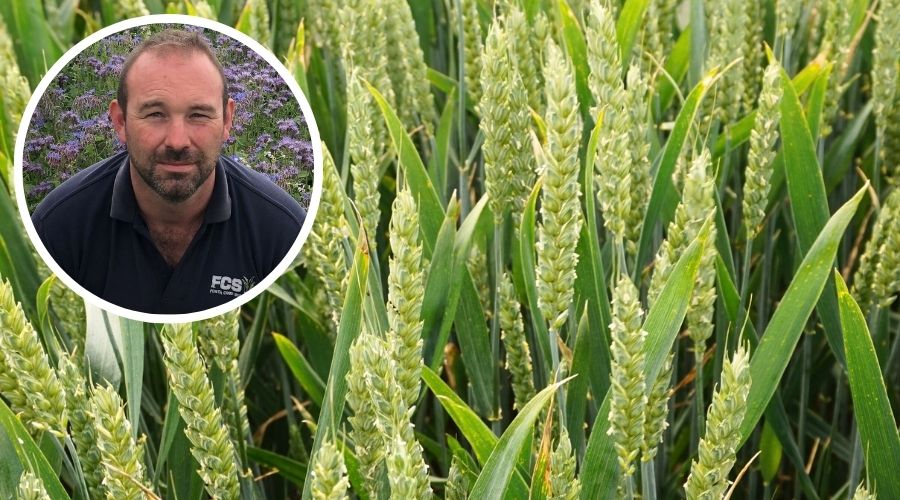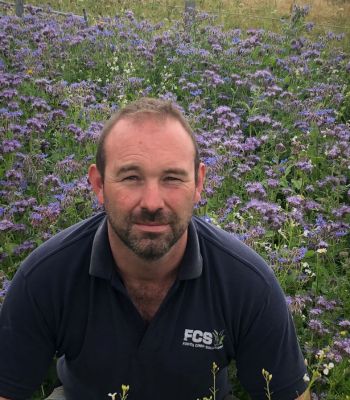Fife farmer shares secret of his crop ‘stand-out performer’
8th May 2024
From early to late drilling, ploughed land to min-tilled, and high to low soil fertility, Fife farmer and contractor Zander Hughes faces almost every possible cropping scenario across the 320ha he farms for a range of clients.

Such variability represents a stern test for any variety, but Mr Hughes claims that LG Skyscraper continues to be the “stand-out performer” in terms of its consistent yield and quality across multiple seasons and flexibility to go into a range of drilling situations.
Having grown LG Skyscraper since its launch five years ago, the variety once again accounts for his entire winter wheat area, with around 130ha in the ground for harvest 2024, up from 81ha last season, due to rotational shifts and a slight reduction in spring barley area.
Most is sown as the first wheat after potatoes, vegetables, grass, or spring barley.
Biggest yield
Mr Hughes said: “We’ve never had any problems with the LG Skyscraper. We really like it as a variety. To this day, LG Skyscraper remains the variety that produced the biggest yield I’ve ever grown, at 14.5t/ha in the year we first tried it.”
Although last year’s crop did not quite reach that level, the Fife farmer said it still performed really well, averaging 10.5-10.75 t/ha across the whole wheat area, with big, bold grains, good quality, and plenty of straw that stood well.
That performance came despite relatively high disease pressure last season, and challenging conditions that meant the first T0 fungicide, plus growth regulator, could not be applied, he notes.
Mr Hughes added: “That did put slightly more pressure on the T1 and T2 growth regulators in high fertility situations, but despite this, crops generally still stood really well.”
Looking good in a tough year

As for this year’s crop, Mr Hughes says the vast majority was drilled into good conditions, despite the tricky autumn weather that stretched the drilling window from 1st September to mid-November.
Some fields were ploughed, while others were min-tilled, although decisions are very much taken on a field-by-field basis, depending on soil conditions and previous cropping.
The farmer said that LG Skyscraper has a “fairly vigorous” growth habit once it germinates, so he has no fear of sowing it later, as he might with some other varieties.
As always, seed rates were adjusted according to drilling date and conditions, ranging from 375 seeds/m2 at the lowest, up to 525 seeds/m2 in the most challenging situations last autumn.
Mr Hughes said: “At the moment, there aren’t really any obvious differences between the early and late-sown crops. We’ve found that standing water on some fields, which is a new thing for us this year, has had more of an effect than drilling date.”
Little and often approach
With most crops around growth stage 31 (T1) at the moment, Mr Hughes said that generally the LG Skyscraper all looks well, with no obvious issues, despite ideal conditions for Septoria and yellow rust development over much of the season so far.
Given the higher disease risk, robust SDHI and triazole-based T1 and T2 fungicides will be used to protect the important yield-building leaves through the remainder of the growing season and maximise crop potential.
This will build on the prothioconazole-based T0 applied earlier this spring, accompanied by trinexapac-ethyl and chlormequat growth regulators and trace elements.
He added: “Growth stages are slightly all over the place at the moment, even within the same field, so we’re hoping the T0 growth regulator will reduce the apical dominance of the main stems a bit, as they’re a lot further on than the tillers at this stage. We’ll also apply another growth regulator at T1, although decisions are taken on a field-by-field basis.”
Nitrogen is usually applied in three doses, but this year Mr Hughes has favoured more of a “little and often” approach, based on four applications of granular fertiliser, roughly in a 30-40-20-10% split, to reduce any potential risks of field losses due to the weather.
Total application generally averages around 210kg/ha, although this ranges from 180kg/ha to 240kg/ha depending on soil levels and crop potential.
First demonstration of the season
Looking ahead to next season, Mr Hughes said he plans to continue growing LG Skyscraper, although he is also going to try Limagrain UK’s new hard Group 4 variety, LG Beowulf, which joined the AHDB Recommended List this year as the highest yielding winter wheat.
LG Skyscraper is just one of 16 varieties featuring in a Limagrain UK variety demonstration that Mr Hughes is hosting for the first time this season.
He added: “The demonstration is being held on one of our contract farms that hasn’t grown wheat for around 15 years. My initial plan was to go with LG Skyscraper on this farm, because it’s one we like and has done well for us, but there was some debate as to what variety would best suit the farm, hence hosting the trial here.”
As well as a range of Limagrain UK and competitor varieties, the demonstration is also looking at the impact of different seed rates on four Limagrain wheats, sown at half, three-quarters, 100%, and 125% of the standard seed rate.
Read more arable news.

